The Resident Evil series has a history of do-overs. There are, at a conservative estimate, at least four different scrapped versions of Resi 4. But that wasn’t the first time Capcom canned a game in the series.
The very first sequel was cancelled as it approached release due to internal dissatisfaction at the studio. Despite being nearly complete it was all but abandoned, with the team starting over and salvaging just a few scraps of the original idea. This canned version became known as Resident Evil 1.5 to fans and would have been a significantly different game from the 2 we know and love today.
This lost Resident Evil 1.5 shouldn’t be confused with another Biohazard 1.5 (to give it its Japanese title), a prequel spin-off that earned its name due to it being set between 1 and 2. That went on to become Resident Evil 3: Nemesis when Sony announced the PlayStation 2. With the next generation on the way, Capcom rescheduled its slate and promoted the 1.5 spin off to become a full instalment on PS1, while what was due to be No 3 moved over to the then next-gen systems, eventually appearing on GameCube and PS2 as Resi 4.
This 1.5, however, remains unreleased and as such was never canon, focusing on a story where Umbrella was closed down following the mansion incident in the first game. It still featured recognisable elements from the final sequel: a zombie outbreak in Raccoon City, Leon S. Kennedy as a rookie cop, Sherry and William ‘bad guy monster’ Birkin. But instead of Claire Redfield there was Elza Walker, a motorcycle racing university student; it featured mutant baboons, spider-human hybrids and a boss called Golgotha that according to developer notes on concept art had the face of Wesker on its tail. No one knows why.
While you could argue that the decision to abandon the original sequel has proved itself over time, for some, the allure of what could have been remains strong. 1.5 wasn’t a secret: Capcom showed it publicly in press and at events during the entire run up to its eventual cancellation. It’s rumoured the game was as much as 80 per cent complete when it was scrapped.
That’s led to partial builds of the game leaking out and, in the case of Team IGAS, a concerted effort by fans to rebuild the original. I spoke to two of the approximately 15-strong team to find out more about the what and the why of digging up a dead sequel, and bringing it back to life.
As an amateur group of developers bound together by a love of Resident Evil, job titles aren’t strictly enforced (or real names for that matter). “Supervisor or something like … producer,” guesses B. Zork, the man originally behind the project and currently a team leader of sorts. According to him the core purpose of the attempt to remake the game is to “realise the idea of a Resident Evil 2 that would have continued with the game’s initial design direction, utilising as much of its original and authentic content as possible”.
It was an idea that was seeded way back in history to a time when 1.5 was still going to be Resi 2: “I found myself confused by how different [the] retail Resident Evil 2 looked compared to the coverage back in the late ’90s. Being familiar with odd naming conventions like the Super Mario Bros. franchise and Final Fantasy stuff skipping entries, renaming entries, etc, I initially thought what’s commonly called 1.5 was just some sort of odd naming issue, but when RE3 popped — and that too was, well, not 1.5 — curiosity got me and the endless search sort of started.”
That curiosity led to getting one of the many builds that leaked out into the public with a vague idea of translating it and seeing what the game was originally meant to be. However, it wasn’t going to be that simple according to the project’s lead programmer ‘D. Birkin’: “over half of the engine is broken or totally missing,” he explains. Such was the state of the code that even the original simple plan of translating required significant work. “In order to provide even a simple translation we needed to build a foundation library that would extract the text for us,” explains Birkin. “It’s a huge package of code that you would use for a project aimed at specific tasks, say a graphics library is to handle [graphics user interface] programming.”
So before the team could start rebuilding the game, they had to reconstruct the original engine and the tools needed to manipulate it. “There’s a build of Biohazard 2 that’s been floating around since the late ’90s pirate disc market. That build has snips of uncompiled code on it,” offers Zork as an example of one of the resources used to help get the raw material of 1.5 in shape.
Currently the team is using “a mix of proprietary tools developed specifically for the project, emulators and some other bits ‘n’ bobs of software and hardware,” says Zork. “Basically, if there’s no tool that does what you need a tool to do, you must make it yourself.” For example three tools created by Birkin to help the process along were an extractor to get the code out of the original source files, nicknamed birkOUT, a rebuilder to package it all back into a usable format, nicknamed birkIN, and a room editor called RDT Walker (shown below).
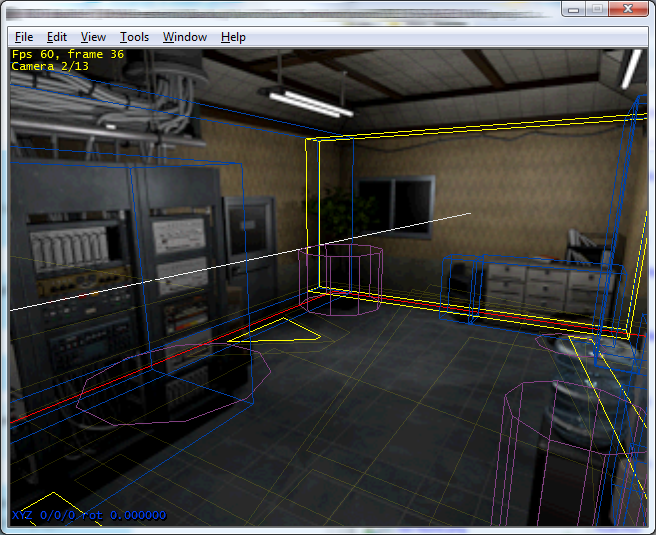
There’s also what the team refer to as “behind the scenes official support”, although Zork won’t go any further than that, simply saying that “this person would rather not be involved, but let’s say he was a member of an important software house”. The source has apparently been helpful in explaining why some things were broken or unfinished in the game’s code.
Interestingly, one of the first thing this digital archaeology turned up was the clear learning curve the original Capcom development team went through on the journey from Resident Evil 1, 1.5 and 2. Birkin describes 1.5 as “a transition game.” The first instalment was coded “with a funky standard,” he explains, adding “you’d be surprised to see how many resources RE1 wastes because Capcom didn’t approach it with a good strategy.” Number 2 however was more “streamlined and better organised.” While 1.5 is in the middle, neither overly messy, or too polished. For example, some critical code is poorly optimised (Birkin describes core code as “part of the engine that can stress performance to the point lag happens”). Although, despite its roughness, 1.5‘s engine had some advantages, with a far greater on-screen enemy count than would finally appearer in Resi 2.
To help rebuild the game, one of the first things the team got to work on was the unglamorous sounding text extraction. “The game has a lot of rooms and a lot of unfinished or broken events for cutscenes and such,” explains Birkin. “Being able to extract the text, we were able to recover a lot of information.”
As well as the extracted text and clues buried in the game’s code, the games prominent press coverage at the time is an invaluable source of info. There were numerous previews, screens and even a playable demo released to the public.
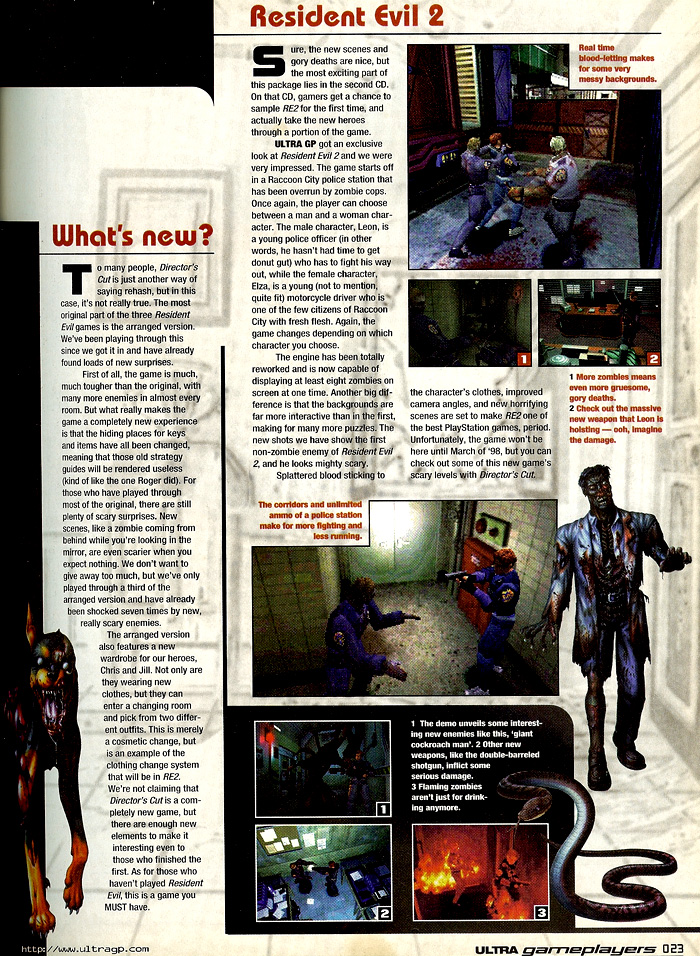
“A lot of information has been known about this game for quite some time and over the years, a lot of random bits and pieces have turned up, ” explains Zork. “There’s of course a lot of different trailers and gameplay footage from various old gaming magazines from the ’90s.” The game’s legendary status helped to some extent here, with numerous fan sites collecting together all the press shots, concept art, video and building a bank of material to piece together the events and locations. This image, for example, shows an alleyway seen only in press shots, compared to the rebuilt one in TeamIGAS’ remake:
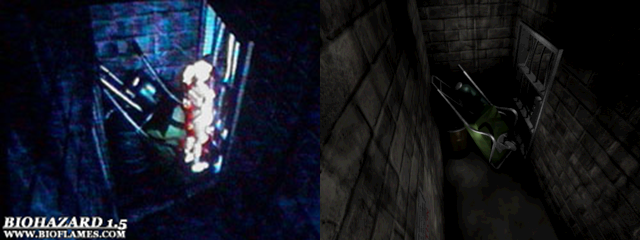
Various builds of the game have also provided clues, explains Birkin: “What didn’t come from magazines, came straight away from Capcom’s assets. Lucky for us, they left a ton of useful backgrounds and other assets on various builds that we could use, either for research or simple re-population of the game.” Zork continues: “Luckily, one of the public demos Capcom released for Biohazard 2 back in the day contains a lot of leftover data from 1.5, so we’ve got a nice chunk of background renders from there.”
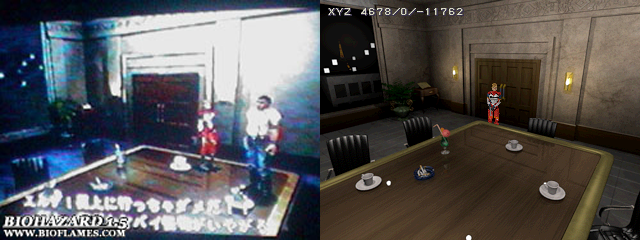
Another shot comparing previously released shots and the restored location.
Fan discussion over the layout of the less well-known areas has created a conspiracy-level web of scribbled over screens — looped details linking one area to another. Something that’s been made even harder by the various configuration of the builds that have leaked. There are different locations, or camera angles, or untextured, tricky to identify backgrounds hidden in the data. “Can someone tell me what/where the hell this is? I found it on the Trial Disc,” exclaims one poster in exasperation.
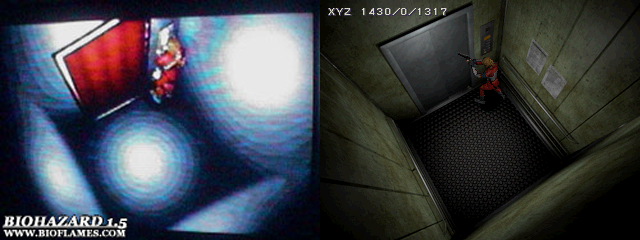
Here’s another shot of a restored location with Birkin explaining “This one includes a few tweaks, like a proper scale. CAPCOM’s version is way smaller than it should be and Elza appears a lot taller than she looks from outside the elevator.”
Images like the one below, trying to piece together old screens aren’t uncommon. While there are threads poring over gameplay and screens trying to piece together in-game puzzles and the order characters find certain items.
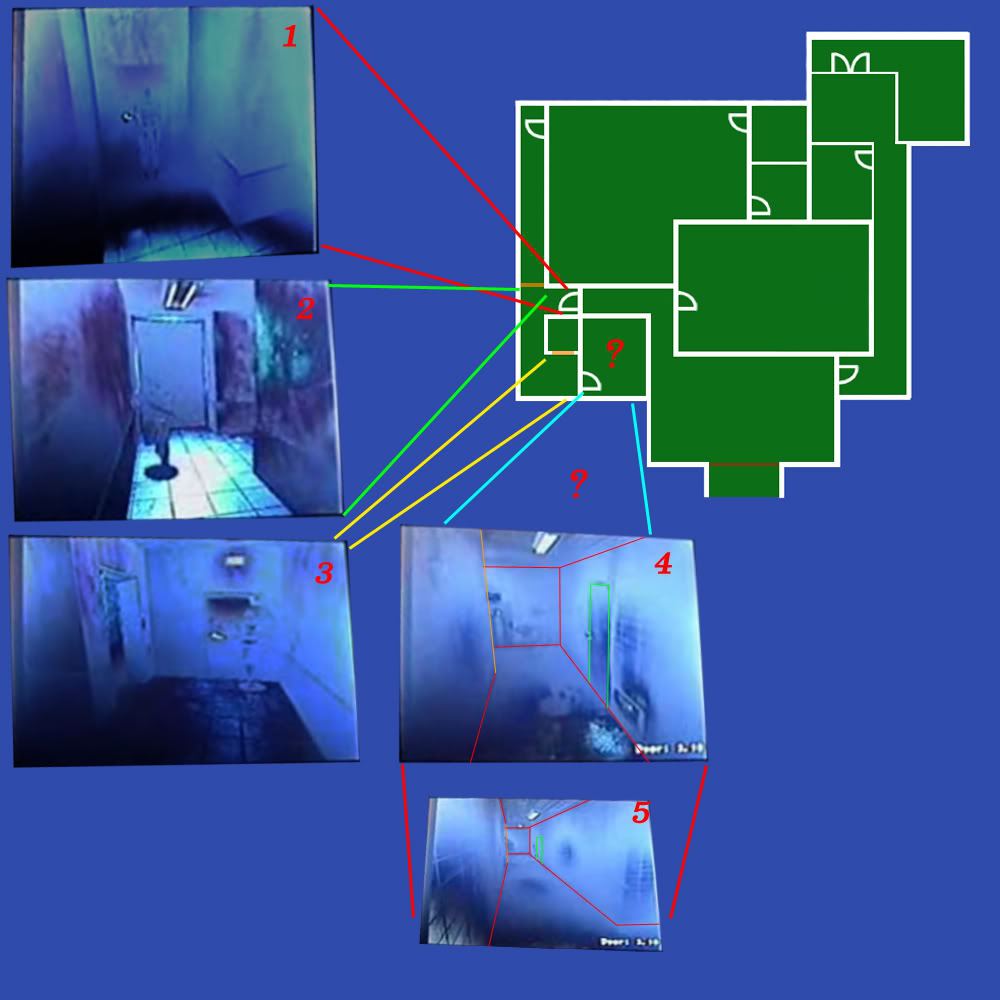
In some cases, where there just isn’t enough information, the team has to just take its best educated guess based on what it can prove. One example is a conference room near a heliport that has “a weird history.” “There were a few pictures of it, but none showing the entire room,” explains Zork. “I guess the first thing that’s done with all rooms, whether they have existing coverage or not, is that the function of the room is identified. Then we’ll compare it up against rooms with similar functions in retail.”
In the case of the conference room it wasn’t just the location that needed to be confirmed, as previous coverage showed Elza being attacked by the game’s infected baboons: “the briefing room is a funny one because we initially thought the baboons would be coming from one of the windows, specifically the one on the eastern wing,” says Birkin. A model of the Raccoon City Police Department was created to “check out if there were any structural inconsistencies” and try to better fix the room’s location. As it turns out, the team’s first guess was right, something later confirmed by then director Hideki Kamiya:
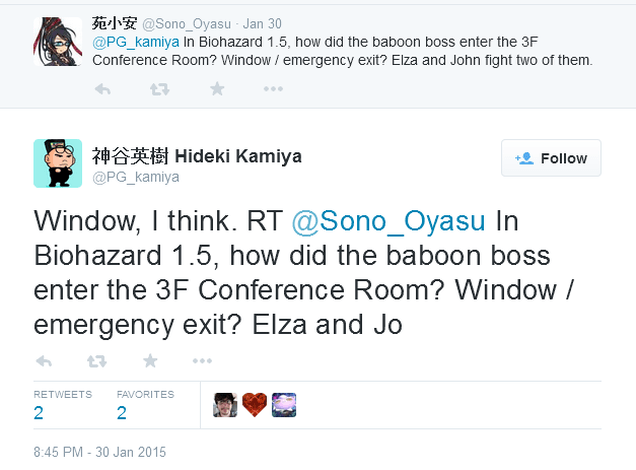
In some cases though, there’s nothing left but to add in your own ideas. Team IGAS reckon they have documentation and reference material for about 90-95% of the game. That still leaves a few sections of the game that can’t be accounted for. The East Wing Corridor is one such location. “The room has no concept art, renders, or even prototype shots,” says Birkin, and filling in the blanks has involved some detective work: “Do we know at least the shape of this room? OK, what do we need the room for? Probably one of the early areas for Elza, so let’s fill it with something to give her a chance of survival. Now, it being Elza, we decided to fill it with a dead officer and a gun for her survival, since she isn’t a police officer and she wouldn’t possibly own a weapon, except for a knife for self defence.”
Where the team have been filling blanks they at least have a recognisable structure to fall back on: “In the RE games, you have this little egg hunt going. You run to room A to get an item that lets you enter room B, once you’re in room B, you find new things blocking your way, so you need to find new key items, etc,” explains Zork. “I think the part where we might be taking the most liberties [is] with the boss AIs. We don’t know exactly what the boss would have done, but RE2 is probably a good indicator of that. The only thing we can’t nail entirely is the dialogue. We know the intentions of characters, we know where key events will take place, etc.” Using what information they have, the team plan to fill in the 5-10 per cent that’s missing.
Making decisions on how to replace missing parts can occasionally ruffle fans, partly because there are plenty of opinions as to what the ‘true’ Resi 1.5 should be. To some, it is the released Resident Evil 2, with 1.5 simply one of the stepping stones along the way. To others, the fragmented bits of 1.5 that exist represent a lost chapter in the story. There are people who want to see it restored and those that see additive efforts to ‘finish’ the game as tampering with the original vision.
In the end Zork is relaxed but clear about the accuracy of the eventual result: “We just gotta compare things up against any retail counterparts and try to just do something that both feels contextually appropriate and also fun.” This is, after all, both a huge task but also a fan project powered by the love of a game, and a curiosity for what could have been. It’s a fascinating look into an attempt to preserve an all too fragile digital history that can be rendered meaningless, and then lost, simply because data can’t be read any more. Many old games or important prototypes have disappeared simply because software houses didn’t value the raw materials at the time (more on that here).
It’s a small step but efforts like this are saving gaming’s past.

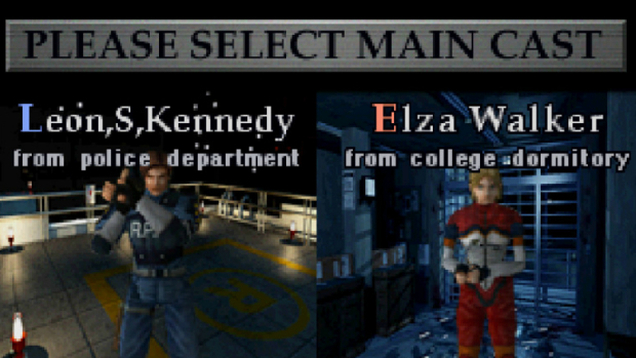
Comments
2 responses to “Raising The Dead: How Fans Are Trying To Save Resident Evil 1.5”
Love it!!!!! Yes!!!!
Start of the story states that what was RE 3 moved to next gen and became RE4. That’s incorrect, it became RE Code Veronica.
Anyone who is upset with a whole team of RE fans doing their utmost best to restore an unfinished/unreleased game because it corrupts the original vision needs to sit down and stfu. If they are unhappy with it, they don’t need to play it, and it’s commendable that these keen fans are doing a service to others by restoring something incoherent into the best version possible. The only possible reason to get upset over this is if it would dissuade Capcom from using this material for a future game… but that seems extremely unlikely. Also, although Capcom make really awesome games, sometimes they do need tweaks(I guess most games do; WoW is still being patched 10 years later… and I personally would rebalance MvC2 and UMvC3 if I had access to the engines and knowledge).